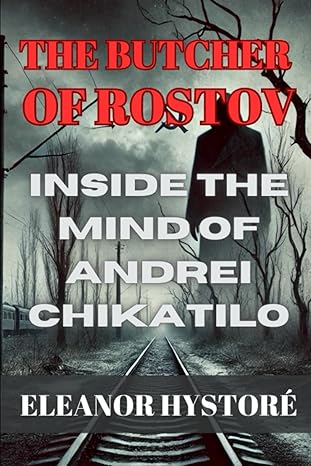Few names in the annals of crime history inspire the same chilling response as Andrei Chikatilo, infamously known as The Butcher of Rostov. Over the course of more than a decade, this Soviet serial killer terrorized Russia, leaving a gruesome trail of over 50 victims—many of them children. But what made Chikatilo so horrifying wasn’t just the scale of his crimes—it was the cold, calculated way he committed them, and the decades-long investigation it took to bring him to justice.
In this deep dive, we examine the twisted psychology of one of the world’s most brutal murderers and explore the environment that allowed such a monster to flourish unnoticed for so long.

Who Was Andrei Chikatilo?
Born in 1936 in Ukraine under Stalin’s brutal regime, Chikatilo grew up in an atmosphere of fear, famine, and state-controlled silence. His childhood was marked by trauma: starvation, alleged cannibalism in his village, and humiliation due to his medical impotence. These early experiences were believed to shape his disturbed psyche and fuel a lifelong desire for control and dominance.
He later moved to Rostov-on-Don, where he lived a double life—a seemingly mild-mannered teacher by day, a sadistic predator by night.
A Decade of Terror
Between 1978 and 1990, Chikatilo committed an unspeakable series of murders. His victims were often lured to remote areas with promises of food, money, or work. Once isolated, he would unleash a frenzy of violence—stabbing, mutilating, and often cannibalizing his victims. The crimes were so savage that they baffled investigators who initially believed they were dealing with multiple killers.
Why He Killed
Chikatilo’s motivations remain a dark puzzle. Experts suggest a combination of repressed rage, sexual dysfunction, and deep-seated resentment toward society. He described the murders as a way to achieve sexual gratification—something he could not experience in a normal relationship. His gruesome acts gave him the power and release he otherwise lacked.
The Hunt and Capture
For years, Soviet authorities denied the existence of a serial killer, believing such depravity was a product of the West. This denial delayed the investigation and allowed Chikatilo to continue his spree. It wasn’t until forensic profiling and undercover surveillance narrowed the field that he was finally caught in 1990. His eventual confession was a shocking catalogue of horror—each murder described in graphic detail.
The Trial and Execution
In one of the most bizarre court scenes ever witnessed, Chikatilo ranted and raved in a cage like a wild animal, clearly unraveling. He was convicted of 52 murders and executed by gunshot in 1994. But the shadow he cast over Russia still lingers, a terrifying reminder of what can hide behind a mask of normalcy.
Read More: The Full Story in Chilling Detail
If you’re intrigued by the psychology of serial killers and want to understand the full depth of Chikatilo’s crimes, I highly recommend the book:
👉 The Butcher of Rostov: Inside the Mind of Andrei Chikatilo
This gripping true crime account delves deeper into his twisted world, the societal failures that let him slip through the cracks, and the painstaking process of unmasking one of history’s most horrifying figures.
Final Thoughts
Andrei Chikatilo was more than a murderer—he was a manifestation of suppressed horrors in a crumbling Soviet system. His story serves as a disturbing case study in how monsters are made, and how long they can remain hidden in plain sight.

Leave a Reply
You must be logged in to post a comment.